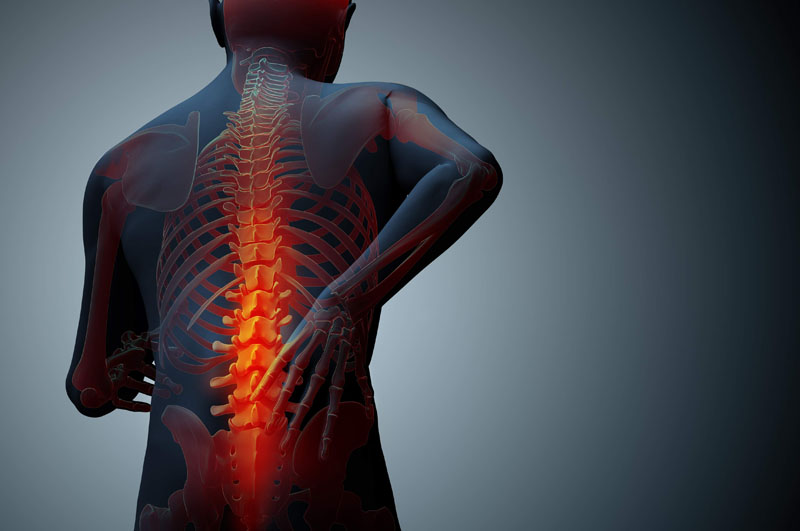Lumbar Canal The narrowing of the lumbar spine, known as stenosis, causes compression of the spinal nerves. This may result in lower back and leg pain, numbness, and paralysis. Degenerative disc disease, congenital abnormalities, arthritis, and other disorders are a few of the potential causes of this syndrome.
Degenerative disc disease occurs when the discs in the spine get damaged and lose their ability to cushion the spine. This may compress the spine, resulting in discomfort and other symptoms. Age, genetics, and prior trauma are all risk factors for this illness.
Congenital defects are birth defects. Spina bifida, scoliosis, and spinal stenosis are a few examples of these. Pain and other symptoms can result from the spine becoming compressed and constricted as a result of these diseases. Family history and specific medical conditions are risk factors for congenital abnormalities.
Arthritis is a disorder in which the joints become inflamed and stiff. The spine may be impacted by this and become compressed, resulting in pain and other symptoms. Age, heredity, and a person’s way of life are all risk factors for arthritis.
Other causes of Lumbar Canal Stenosis include other structural conditions, such as herniated discs, and trauma, such as a fall or car accident.
Degenerative Disc Disease
Degenerative disc disease is a condition in which the discs in the spine get damaged and lose their cushioning function. This may compress the spine, resulting in discomfort and other symptoms. Degenerative disc disease symptoms can include sciatica, lower back discomfort, tingling or numbness in the legs, and muscle spasms.
Age, heredity, and prior traumas are all risk factors for developing degenerative disc disease. Our discs are more susceptible to damage as we age, and having a family member with the condition can increase our risk of developing it. Degenerative disc degeneration might also increase the likelihood of previous injuries, including a herniated disc.
Physical therapy, medicines, and injections can all be used to treat degenerative disc degeneration. The back muscles can be strengthened and flexibility increased with the help of physical therapy. Pain and inflammation can be reduced with the use of medications. Nerve discomfort can be lessened with injections. The underlying issue may not be completely resolved by any of these treatments, but they can all help to lessen discomfort and improve function.
Congenital Defects
Congenital defects are birth defects. Spina bifida, scoliosis, and spinal stenosis are a few examples of these. Pain and other symptoms can result from the spine becoming compressed and constricted as a result of these diseases. Lower back pain, sciatica, leg numbness or tingling, and muscle spasms are examples of congenital defect symptoms.
Family history and certain medical problems are also risk factors for congenital abnormalities. An individual is more prone to develop the ailment if there is a family history of it. Congenital abnormalities can also be more likely to occur in people who have certain medical disorders, such as diabetes and osteoporosis.
Physical therapy, medicines, and injections can all be used to treat congenital abnormalities. The back muscles can be strengthened and flexibility increased with the help of physical therapy. Pain and inflammation can be reduced with the use of medications. Nerve discomfort can be lessened with injections. The underlying issue may not be completely resolved by any of these treatments, but they can all help to lessen discomfort and improve function.
Age, genetics, and lifestyle factors are all risk factors for arthritis. Our joints are more prone to wear and tear as we age, and having a family member with the condition can increase our risk of developing it. Smoking and being overweight are two lifestyle choices that can raise your risk of developing arthritis.
Arthritis treatment may include physical therapy, medicines, and injections. The back muscles can be strengthened and flexibility increased with the help of physical therapy. Pain and inflammation can be reduced with the use of medications. Nerve discomfort can be lessened with injections. The underlying issue may not be completely resolved by any of these treatments, but they can all help to lessen discomfort and improve function.
Other structural disorders, such as ruptured discs, and trauma, such as a fall or a car accident, can also induce Lumbar Canal Stenosis. When a disc is injured, part of the interior material is forced out, resulting in a herniated disc. This may cause the spinal nerves to get compressed, which can cause pain and other symptoms. Trauma, such as a collision or fall, can also compress the spine, resulting in discomfort and other symptoms.
Physical therapy, medicines, and injections can be used to treat herniated discs and trauma. The back muscles can be strengthened and flexibility increased with the help of physical therapy. Pain and inflammation can be reduced with the use of medications. Nerve discomfort can be lessened with injections. The underlying issue may not be completely resolved by any of these treatments, but they can all help to lessen discomfort and improve function.
Conclusion
In conclusion, it is important to understand the causes of Lumbar Canal Stenosis in order to better understand and treat the condition. Dr. Ganesh Mundhe has highlighted several potential causes of the condition, including degenerative disc disease, congenital defects, arthritis, and other conditions. Risk factors for developing the condition can include age, genetics, and previous injuries. Treatment options for Lumbar Canal Stenosis include physical therapy, medications, and injections. All of these treatments can help to reduce pain and improve function, but they may not cure the underlying condition. It is important to seek medical advice from a doctor if you are experiencing any symptoms of the condition.
Dr. Ganesh Mundhe – MBBS, MS (Orthopaedics)
The spine surgeon Dr. Ganesh Mundhe practises in Pimpri Chinchwad, Pune, India. He received training in the full range of minimally invasive spine surgery at some of the most prestigious institutions worldwide. His areas of expertise include artificial disc replacement, deformity correction, minimally invasive spine surgery, etc.

